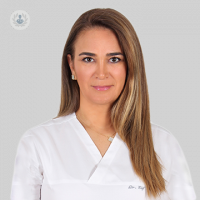Kids’ braces FAQs: types, when to get them, and more
Autore:Braces are an essential treatment for many children to ensure that their teeth and jaw develop in a way that minimises their risk of future problems. As parents, it can be difficult to know what types are available, when to get them, or what the prices of braces are based on. Dr Elif Keser answers these very frequent questions that parents have regarding their child’s braces.

What types of kids’ braces are available?
There are several types available.
Expanders
Palatal expanders make more space in the mouth by widening the upper jaw. This is a removable appliance that can be taken off for eating and brushing.
Fixed braces
Fixed braces are often required by children with dental issues. These braces are stuck onto the teeth and tightened to correct their positions. These can be clear (ceramic) or metal. Based on a patient’s desire to have clear or visible braces, they will choose either ceramic or metal.

Removable braces
These are similar to fixed braces regarding the fact that they get tightened in order to adjust teeth position. However, these braces can be removed when a child eats or brushes their teeth.
Invisalign (clear aligner)
There is also an option for kids which is designed by the well-known brand “Invisalign”. This clear aligner is a mould of the child’s teeth that can straighten teeth in a very discreet and comfortable way. Multiple sets are used during the course of treatment.

When are braces the best treatment?
Some dental issues that are discovered at an early age can only be fixed by braces, therefore making them best chance your child has to alter their jaw and teeth. Your dentist will determine whether or not braces are the best option and advise you on the most beneficial type.
When is the earliest that a child can have braces?
It’s recommended that a child sees an orthodontist at the age of seven or eight years old. At this age, we can see if there is any problem that needs to be fixed and apply braces right away if necessary. By doing so, early-stage problems are solved much more easily.
In some cases, braces are recommended at a later stage of the child’s dental development.
Do braces increase the risk of gum disease?
As long as the child’s oral hygiene is looked after during the course of their treatment, the risk of gum disease is not increased and there is no additional risk of cavities. This means cleaning teeth regularly and properly with good brushing technique and getting regular dental check-ups.

Will my child have to avoid certain foods?
Some types of food should be avoided. These are sticky foods such as caramel and toffee as well as certain jelly sweets like jelly beans. Fizzy drinks should also be avoided.
Do braces interfere with any aspect of kids’ daily activities?
Braces should not interfere with any aspect of kids’ daily activities. If they wear a gum shield for a certain sport, they should ensure they always wear it.
What is the price of kids’ braces based on?
Kids braces are based on the length of treatment needed, the complexity of the treatment, the type of brace, and the material of the brace.
Dr Keser has a range of expertise in adult and child orthodontics. Visit her profile to see how she can assist you and your family’s dental health.


